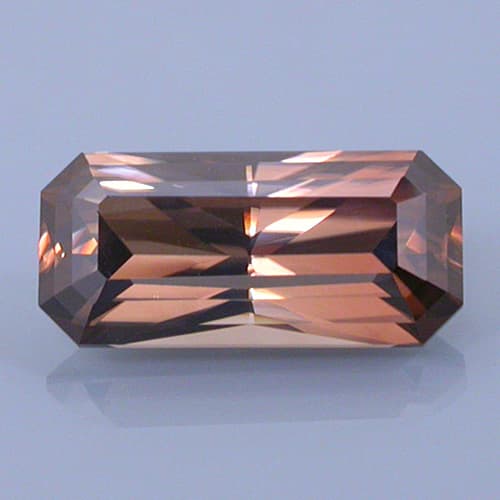What is Gemstone Birefringence?
Gemstone birefringence is a measure of a gem's double refraction. Learn how it’s used to identify gems and see the effects birefringent gems can display.
1 Minute Read
Measuring Refractive Index
Light slows down (or bends) whenever it enters a gemstone. Gemologists calculate a gem's refractive index, or RI, by dividing the speed of light in a vacuum by the speed of light as it passes through the gem. (Since the speed of light in a vacuum is always faster than the speed of light through any gemstone, an RI is always a number greater than 1). Gemologists use a device called a refractometer to measure a gem's RI. Since the RI ranges of gemstones have been well established, this is a valuable gem identification technique.
Which Gems Show Birefringence?
Gems with an isometric or cubic crystal system, like diamonds, have only one RI since these crystals don't polarize light. They aren't doubly refractive and, thus, have no birefringence. Amorphous gems like opals also have only one RI and no birefringence.
Gemstones with all other crystal systems are doubly refractive. They have two (or three) RIs based on the direction light enters them.
How do You Calculate a Gem's Birefringence?
The difference between a gemstone's highest and lowest RIs is its birefringence number. The greater that number, the more noticeable the effects of double refraction will be to the naked eye.
Some gemstones have ranges for RI values for each of their axes. For example, microcline, a variety of feldspar, has the following RI values:
α axis = 1.514-1.529; β axis = 1.518-1.533; and γ axis = 1.521-1.539.
In cases like these, you calculate the birefringence as a range. You take the maximum difference of the smallest values and the maximum difference of the highest values. Thus:
1.521 - 1.514 = 0.007
1.539 - 1.529 = 0.010
So, the birefringence of microcline is 0.007-0.010.
Birefringent Effects
Pleochroism
If gemstones with high birefringence have color, they may display pleochroism, two or three colors, such as naturally trichroic zoisite. You can see different pleochroic colors depending on your viewing angle.
Fuzziness
Other effects can include a fuzzy, out-of-focus appearance, such as in this piece of adamite.
Double Images
Some gems are so birefringent that they create a double vision effect. If the stone is faceted, the facets on the opposite side of the viewer will appear to be doubled. Some gemstones, such as calcite, will create a double image of whatever lies behind it.
International Gem Society
Related Articles
What is a Gem?
Precision Faceting A Story Gemstone: Faceting Equipment
A World of Crystals
An Introduction to the Lapidary Arts
Never Stop Learning
When you join the IGS community, you get trusted diamond & gemstone information when you need it.
Get Gemology Insights
Get started with the International Gem Society’s free guide to gemstone identification. Join our weekly newsletter & get a free copy of the Gem ID Checklist!
